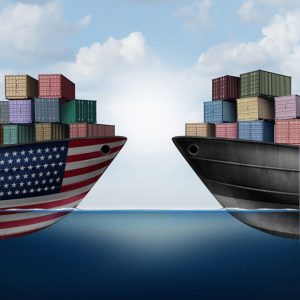This Morning in Metals: Court dismisses challenge to Section 232 duties on Canadian steel
This morning in metals news: the U.S. Court of International Trade granted defendants’ motion for partial dismissal of a challenge to the U.S.’s Section 232 duties on Canadian steel; the Midwest is the heart of U.S. wind capacity; and, lastly, U.S. Steel released its second-quarter guidance.
Each month, MetalMiner hosts a webinar on a specific metals topic. Explore the upcoming webinars — including the next one scheduled for Thursday, June 24 — and sign up for each on the MetalMiner Events page.
Court of International Trade rejects Section 232 challenge
The U.S. Court of International Trade on Tuesday rejected a challenge to the Section 232 duties on Canadian steel.
Maple Leaf Marketing, based in Midland, Texas, filed the complaint. The company is the U.S. agent for EndurAlloy™ production tubing for Calgary-based Endurance Technologies Inc.
Maple Leaf challenged the “constitutionality and lawfulness of duties imposed on re-imported steel tubing” pursuant to Section 232.
Midwest wind
Since 2011, most U.S. wind capacity has been built in the Midwest, the Energy Information Administration reported.
“The Texas, Midwest, and Central regions—home to some of the country’s most prolific wind resources—combined accounted for the largest share of U.S. wind capacity growth from 2011 to 2020 with 73% of additions,” the EIA reported. “At the beginning of 2011, the Texas region (which covers the area served by ERCOT) had 9.4 GW of wind capacity; by the end of 2020, capacity had grown to 27.9 GW.”
Furthermore, Midwest wind capacity tripled, from 8.6 GW in 2011 to 26.9 GW in 2020.
Meanwhile, in 2011, the Central region had about half the wind capacity of the Texas and Midwest regions, the EIA added. The Central region added 20.5 GW of wind capacity over the last decade, more than any other region.
U.S. Steel releases Q2 guidance
U.S. Steel released its Q2 guidance, estimating adjusted EBITDA of $1.2 billion.
In addition, the steelmaker projected net income of $880 million.
“Higher steel prices and strong flat-rolled steel demand coupled with well-run operations are expected to deliver adjusted EBITDA that more than doubles our first quarter performance,” U. S. Steel President and CEO David B. Burritt said. “Continued strong demand and low steel inventories are empowering today’s ongoing market improvements. These market fundamentals are showing no signs of slowing down and have us increasingly confident of another strong year in 2022.”
See why technical analysis is a superior forecasting methodology over fundamental analysis and why it matters for your steel buy.



Leave a Reply